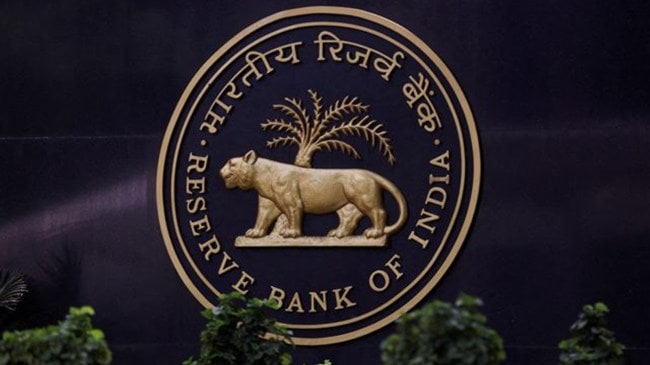Opinion RBI should let the rupee be
In an uncertain global environment, RBI should intervene only to smoothen out excess volatility. Monetary policy should respond to domestic conditions
 On February 7, the RBI's monetary policy committee – which met for the first time under the new governor – lowered interest rates by 25 basis points to 6.25 per cent hoping to spur economic activities. (Express Archives)
On February 7, the RBI's monetary policy committee – which met for the first time under the new governor – lowered interest rates by 25 basis points to 6.25 per cent hoping to spur economic activities. (Express Archives) Dear Express reader,
For some time now it has been evident that the underlying growth momentum in the Indian economy has been slowing down. Economic indicators, including GST collections, had begun to point in that direction from early last year. This weakness also reflected in corporate results. In fact, in their commentary accompanying the second quarter results, some companies had alluded to the “softness” in urban demand and a “shrinking” middle segment. Concerns over pockets of stress were articulated even by the finance ministry in its monthly economic reviews – last year’s August report had talked about “incipient signs of strains in certain sectors” while the September report spoke of “moderation in urban demand”.
These fears were confirmed when the second quarter GDP estimates were released which showed that the slump was deeper than feared with growth falling to just 5.4 per cent. Some have argued that this is a temporary blip, expecting economic activities to gain momentum in the second half of the year. The first advance estimates by the National Statistics Office, which have pegged the economy to grow at 6.4 per cent of the full year, implicitly assume growth at 6.7 per cent in the second half of the year. However, some indicators suggest that the underlying momentum isn’t as robust. Worryingly, expectations for the next year aren’t very promising. The Economic Survey, for instance, expects the economy to grow between 6.3 to 6.8 per cent in 2025-25, while the RBI has recently projected growth at 6.7 per cent.
With concerns over the slowdown gaining traction, over the past few days there has been a concerted attempt by policymakers to support the economy.
On February 1, presenting the Union budget, Finance Minister Niramala Sitharaman announced that “there will be no income tax payable upto income of Rs 12 lakh”. This is a remarkably high threshold considering the country’s per capita income and consumption. It is hoped that this tax cut, which will put more money in the hands of the “middle class” — the finance minister has pegged the tax revenue forgone at a staggering Rs 1 lakh crore — will provide a fillip to flagging consumption, and as a result boost the wider economy. However, the question is: To what extent?
Some have argued that the multiplier benefits of the tax cut will be of a much higher magnitude. However, this is debatable. Rather than spending the entire increase in their in-hand income, households may opt to save a higher proportion. Some have also argued that the additional spending could be diverted towards imported products, limiting the gains to the domestic economy. Some may even prefer to repay their debts — household debt has risen to 43 per cent by June 2024. This could reduce the consumption boost of the tax cut. Moreover, the income tax cuts have been accompanied by curtailed allocations for other government programmes and schemes. The Union budget has also continued on the path of fiscal consolidation — it has budgeted to bring down its fiscal deficit from 4.8 per cent of GDP in 2024-25 to 4.4 per cent in 2025-26. This implies a contractionary impulse.
These fiscal measures were followed by monetary steps a few days later. On February 7, the RBI’s monetary policy committee – which met for the first time under the new governor – lowered interest rates by 25 basis points to 6.25 per cent hoping to spur economic activities. But, more cuts are required. In the absence of any explicit forward guidance, the question now is: Is there space to further reduce the policy rates? And if so, by what extent?
The inflation projections accompanying the MPC meeting show that the central bank expects the consumer price index to average 4.2 per cent in 2025-26 – 4 per cent in the second quarter, 3.8 per cent in the third quarter, and 4.2 per cent in the fourth quarter. These forecasts imply a real interest rate of 2 per cent, indicating the room for further cuts. Former MPC members have in the past argued in favour of keeping real interest rates around 1-1.5 per cent. Alongside, ensuring adequate liquidity should allow for smoother transmission of rates.
However, there are other considerations as well. The rupee has come under immense pressure. But, it is not alone. With the US dollar strengthening, most major currencies have fallen. While the greenback has given up some gains recently — after hovering around 110 levels, it is currently at 107.93 — the pressure is unlikely to ease. Donald Trump’s policies on tariffs, taxes and immigration seem to suggest that the US Federal Reserve is unlikely to lower rates in the near term. Higher rates will only strengthen the dollar. In this uncertain global environment, the RBI should let the rupee adjust, intervene only to smoothen out excess volatility. Monetary policy should respond to domestic conditions.
Till next week,
Ishan Bakshi






